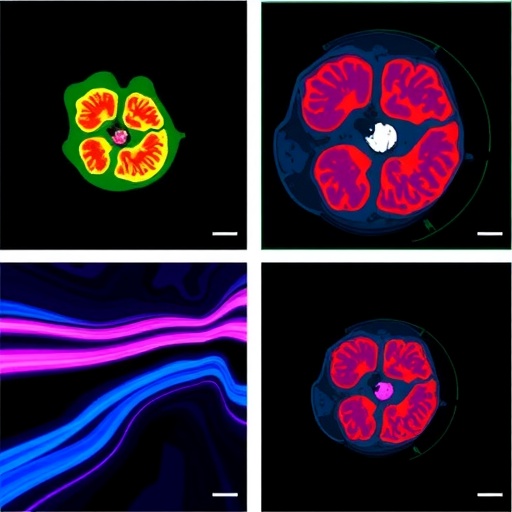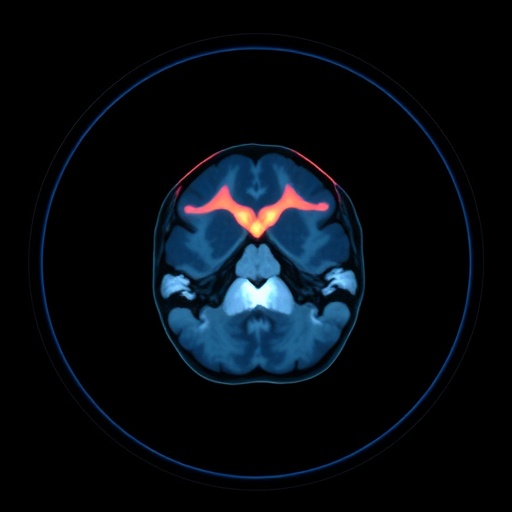A groundbreaking advancement in the field of targeted cancer therapy has emerged from researchers at the Changchun Institute of Applied Chemistry, Chinese Academy of Sciences. Traditionally, chemotherapy, despite its efficacy in eradicating tumor cells, has been dogged by its inability to discriminate between malignant and healthy tissue. This lack of selectivity often results in severe systemic toxicity and debilitating side effects, limiting dosage and overall treatment success. Addressing this long-standing challenge, the research team has innovatively harnessed the power of ultrasound not just as an imaging tool but as a precise chemical activator capable of converting inert prodrugs into potent anticancer agents directly within tumor sites.
Conventional prodrug strategies rely heavily on the pathological microenvironment of tumors, such as acidic pH levels or specific enzymatic activities, to trigger drug activation. However, these intrinsic cues are often heterogeneous and inconsistent across tumor types and even within different regions of the same tumor, leading to suboptimal therapeutic outcomes. External stimuli such as light or heat have been explored to gain better spatial and temporal control over prodrug activation, but their limited tissue penetration and risk of damaging surrounding healthy cells have curtailed their clinical utility, particularly for deeply situated malignancies.
Ultrasound presents a compelling alternative due to its deep tissue penetration, high spatial resolution, and non-invasive nature. While ultrasound’s utility in medical diagnostics and even physical disruption of tumor cells through sonoporation is well-established, its application as a direct chemical activator—capable of initiating specific molecular transformations within biological environments—remains a frontier with profound therapeutic implications. The research team’s pioneering approach explores this underdeveloped domain by engineering ultrasound-responsive nanoparticles designed to activate prodrugs precisely within tumor microenvironments.
.adsslot_ReTMnDvgoH{ width:728px !important; height:90px !important; }
@media (max-width:1199px) { .adsslot_ReTMnDvgoH{ width:468px !important; height:60px !important; } }
@media (max-width:767px) { .adsslot_ReTMnDvgoH{ width:320px !important; height:50px !important; } }
ADVERTISEMENT
Central to this technological leap are nanoparticles meticulously formulated to encapsulate a prodrug variant of the immunomodulatory molecule R848, chemically modified to include an azide group (R848-N₃), alongside a catalyst molecule riboflavin tetrabutyrate. Upon exposure to focused ultrasound waves, these nanoparticles undergo a sophisticated catalytic process fueled by endogenous biomolecules such as nicotinamide adenine dinucleotide (NADH), which is abundantly present within living cells. The ultrasound energy activates the riboflavin catalyst, which in turn chemically reduces the azide prodrug, releasing the active R848 compound in situ. This triggers a potent local immune response, prompting immune cells to recognize and destroy cancer cells with remarkable specificity.
The experimental validation of this approach was conducted in murine models of colorectal cancer, a malignancy notorious for its resistance to conventional treatments and metastatic potential. The results were nothing short of revolutionary. The ultrasound-triggered nanoparticles achieved a tumor suppression efficiency of 99%, effectively halting tumor progression. Even more impressively, this therapeutic strategy resulted in complete tumor eradication in approximately two-thirds of treated mice, all without any detectable damage to surrounding healthy tissues or systemic toxicity—an enduring bane of traditional chemotherapy and many targeted therapies alike.
What distinguishes this method is its elegant exploitation of biological redox chemistry and ultrasound physics to confer unprecedented spatiotemporal control over drug activation. Unlike passive prodrug activation reliant on static tumor properties, this system taps into the dynamic interplay between externally applied ultrasound and endogenous reducing agents, ensuring that the therapeutic payload is unleashed only at the tumor site under user-defined conditions. This minimizes off-target effects and paves the way for personalized therapy regimens adaptable to tumor anatomy and patient variability.
Beyond its immediate therapeutic impact, this innovation opens new horizons in the realm of ultrasound-mediated chemical biology. Dr. Zhaohui Tang, a corresponding author on the study, highlighted the paradigm shift: “This work opens a new frontier in ultrasound-based medicine. It’s not just imaging—sound can now ‘switch on’ therapies exactly where needed.” This heralds a future where ultrasound devices, already ubiquitous in clinical settings, might serve as dual diagnostic-therapeutic platforms, facilitating real-time monitoring and controlled drug activation seamlessly.
The interdisciplinary team behind this breakthrough comprises experts from the Chinese Academy of Sciences, the University of Science and Technology of China, and Jilin University—institutions globally revered for their contributions to polymer science, nanotechnology, and biomedical engineering. Their collaboration reflects the convergence of advanced catalysis, nanomaterial design, and medical physics, underscoring the multifaceted nature of modern therapeutic breakthroughs.
This advance also surmounts several technical hurdles inherent in ultrasound-triggered drug delivery. Ultrasound’s mechanical and thermal effects, while beneficial in certain contexts, often induce non-specific tissue damage or fail to initiate precise chemical transformations. By integrating a highly selective photocatalyst analog responsive to ultrasound energy and leveraging endogenous reducing agents, the team circumvented these pitfalls, achieving robust prodrug activation without collateral damage. This represents a sophisticated interplay of ultrasound physics and redox chemistry hitherto unexplored in clinical oncology.
Clinical translation is the next ambitious frontier the research team intends to pursue. Plans are underway to adapt and optimize this nanocatalytic system for human use, recognizing the complexities posed by human tumor heterogeneity, immune responses, and tissue architectures. Success in this domain could revolutionize cancer therapy, offering patients a safer, more efficient alternative that combines precision medicine with minimally invasive technology.
Moreover, this technology potentially unlocks synergistic combinations with immunotherapies, given the immunostimulatory nature of R848, an agonist of toll-like receptors known to invigorate antitumor immunity. The local and controlled release mediated by ultrasound might amplify systemic immune responses while avoiding the toxicity that plagues systemic administration of immune modulators.
In conclusion, this research milestone embodies a transformative advance in oncological treatment paradigms, deftly combining nanotechnology, ultrasound physics, and chemical catalysis to achieve precise, safe, and effective tumor eradication. It propels the concept of stimulus-responsive therapies beyond traditional physical stimuli into the realm of sound-driven chemical activation, with vast implications beyond oncology, potentially extending into infectious diseases and regenerative medicine. As the scientific community keenly anticipates clinical trials, this approach stands as a beacon of hope for overcoming the limitations of current chemotherapeutic regimens.
Subject of Research: Ultrasound-triggered prodrug activation for targeted cancer therapy using nanocatalytic systems.
Article Title: (Information not provided)
News Publication Date: (Information not provided)
Web References: http://dx.doi.org/10.1093/nsr/nwaf140
References: (Information not provided)
Image Credits: (Information not provided)
Keywords: Ultrasound-triggered therapy, prodrug activation, nanocatalysis, immunotherapy, targeted cancer treatment, R848 prodrug, riboflavin tetrabutyrate catalyst, NADH-mediated reduction, colorectal cancer, chemotherapy alternatives.
Tags: advancements in cancer therapylow-intensity ultrasound cancer therapynon-invasive cancer treatment techniquesovercoming chemotherapy limitationsprecision medicine in oncologyprodrug activation in tumorsselective targeting of cancer cellssystemic toxicity in chemotherapytargeted cancer treatment innovationstumor microenvironment drug activationultrasound as a drug activatorultrasound imaging and therapy





